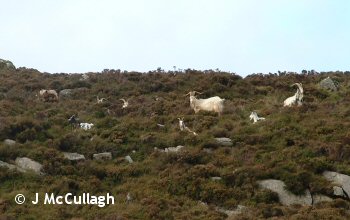Newtownhamilton, says an old copy of the Armagh County Guide, is named after its founder who in 1770 established a settlement here in the Fews Mountains, following two previous unsuccessful attempts in the neighbourhood. The COI Primate of adjacent Armagh
– if somewhat wanting in the spiritual field he was still an effective temporal leader [he was responsible for building the modern ecclesiastical city there] – in 1775 built and endowed the parish church. Locally mined lead was smelted in the village until supplies of wood for firing became scarce. Cromwellian forces, it was recorded from the century before (1645) encamped locally and were continually harried by Irish troops.
The reference here to mining and to a growing scarcity of wood for burning reminds us of two features of South Armagh little thought of today – the great forests that until recent centuries cloaked the countryside and the earth’s ores in the vicinity that are now all but forgotten. There are wall maps in the County Museum in Armagh‘s Mall that describe the location and the variety of mine-workings of old. Beside a 1926 photo of the Creggan mine shaft indicating an intensity of production, there ia added an explanatory note to the effect that,
‘Silver, lead and copper were mined in the south of the county during the eighteenth and nineteenth centuries until the mines were abandoned in the early twentieth century when the lode was thought to be too modest.’ (And am I not right in thinking I recently heard of plans for gold mining in the vicinity?)
There is some correlation between mining and the loss of our forest cover for some proportion of timber went for firing in the mines. More was felled for profit and most of the timber exported (for building and ship-building, and industries such as barrel-making in England and elsewhere). The denuding of the landscape was easily excused by the need to deny sanctuary to the local raparees!
Today’s linear rows of non-native coniferous trees cannot compare with the great forests of oak, ash, alder, birch and hazel that once characterized The Fews – those forests that formerly provided a refuge for the Gaelic clans forming a dense northern boundary with the English Pale.
